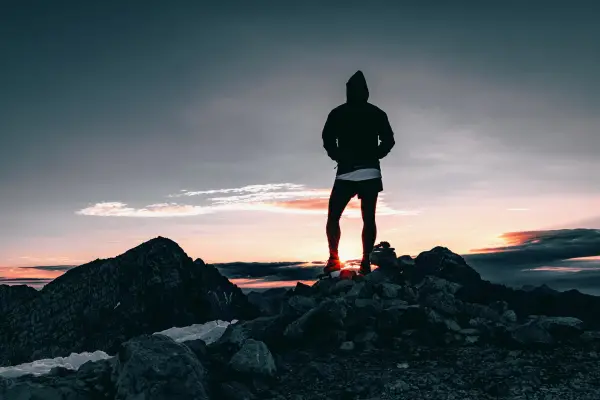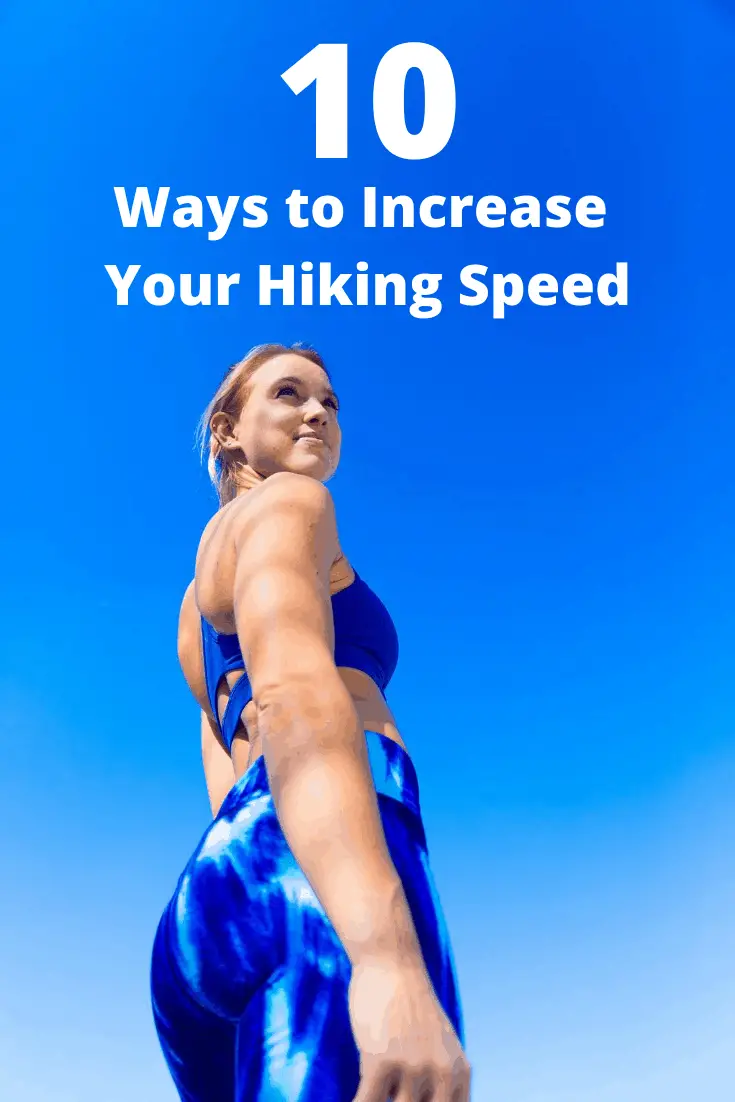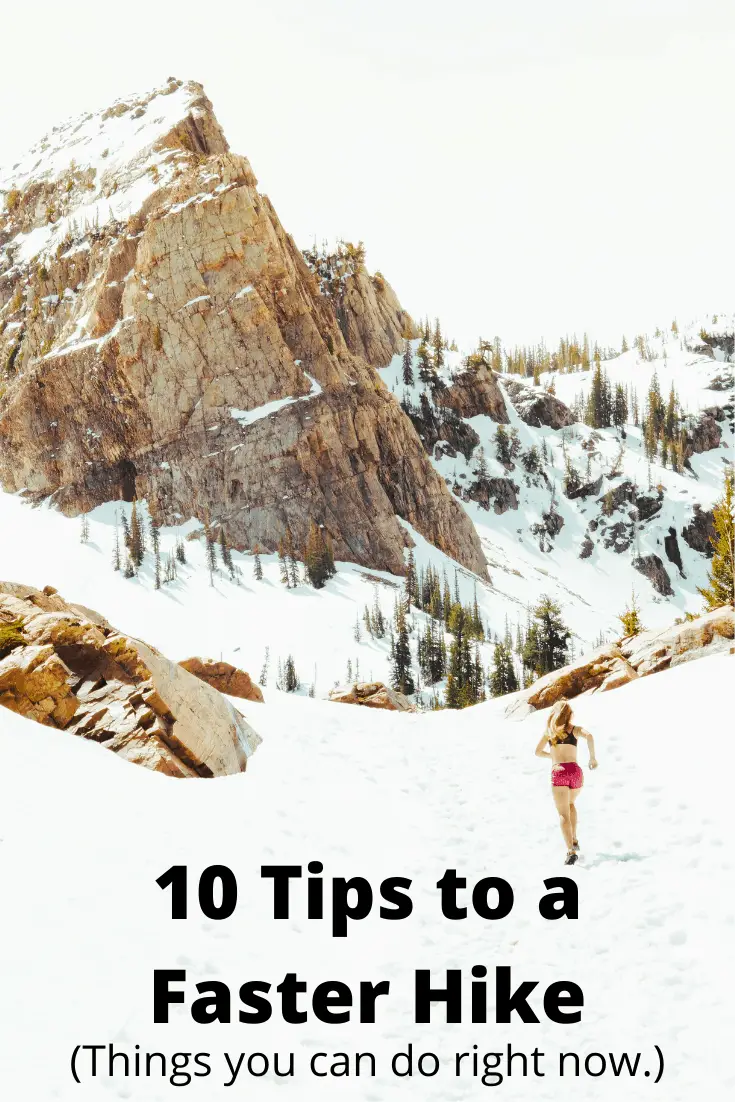
Want to learn how to hike faster? Here are some tips you can use right now to increase your hiking speed.
Table of Contents
Upgrade Your Hiking Footwear
Traditional leather hiking boots are durable but they’re also heavy. This extra weight can be detrimental to your hiking speed.
Fortunately, there are a lot of other options you can choose to go hiking in. Trail runners and synthetic trail sneakers can easily cut a noticeable amount of weight off of your feet.
Not only will you feel lighter in trail shoes but you’ll hike faster too.
If you aren’t quite ready to give up your hiking boots, consider investing in a pair of Gore-tex hiking boots. These boots are incredibly lightweight, breathable, and easy to hike in.
You can learn more about hiking footwear options on my post on hiking footwear below.
Use Trekking Poles
At first glance, it might seem that trekking poles would slow you down rather than speed you up. However, study after study has shown that a good pair of trekking poles will speed up your hiking speed.
The reason hiking poles increase your speed is because they allow more of your body to get involved with the hike. Research has shown that while normal walking uses about 50% of your muscles, walking with hiking poles uses up to 90%.
This allows your entire body to get into the hike and instead of walking an average of 3 miles per hour, you’ll end up moving at speeds between 4 and 5 miles per hour. Go hiking with trekking poles and you could end up doing one or two extra miles per hour of hiking!
Want to find out more about hiking with hiking poles? Check out the link below.
Take Familiar Trails
At one point in time, I was so addicted to hiking that I kept track of the daily sunrise time so that I could sneak a quick hike in before work each morning.
I worked at 9:00 am and needed to get back home to shower and eat before heading to the office so I really had to time things correctly. This was especially true as winter drew closer.
To give myself more miles on the trail each morning I tried to hike as fast as I could. One way I was able to do this was to use the same trail each day.
Because I was so familiar with the trail, I didn’t have to slow down to think about how I would navigate small scrambles. I also didn’t have to pause to consider which rocks were safest to climb up. This increased my speed considerably and I was able to consistently hike faster each day for quite a while.
Choose Flat Trails
If you want to hike fast on new trails, consider choosing hikes without a lot of changes in altitude. You’ll find that both ascents and descents slow you down as they are more physically demanding and more dangerous to navigate.
The easiest way to choose a flat trail is to look at the elevation changes of the trails you’ll be near before choosing one. Just choose the trail with the lowest elevation and you’ll probably end up choosing the one with the evenest terrain.
Lean Into Hills
Of course, it isn’t always possible to avoid elevation changes and hills can often be what makes hiking fun. If you find yourself hiking on uneven terrain, do yourself a favor and lean into the hills.
When you lean into a hill, you get to take advantage of momentum and gravity to help you with your ascent.
On the downhill, you’ll want to do the opposite. Try to keep your back straight and raise your arms up in the air with your elbows parallel to your body and your forearms at a 90-degree angle. This aids in balance and it’ll increase your chances of moving down the hills quickly without falling.
Ignore this downhill hiking advice if you’re using hiking poles as you’ll be able to use them for balance and speed instead.
Lighten Your Load
The lighter your load is, the quicker you’ll be able to hike. This is especially true for backpackers with heavy backpacks.
Just switching out a few heavy items for a few lighter ones could easily increase your hiking speed by up to one or two miles per hour.
For detailed information on what a backpacking base weight might look like with just a few changes in gear, take a look at the post below.
The Best Base Weight for Backpacking – Exploring Backpack Weights
Get Fit
Want to know the best way to lighten your load? Lose some of your extra body fat.
Take an extra five pounds off of your belly and you’ll have five fewer pounds with you on your hike. Not only will this make you hike faster but it will increase your overall health and reduce pressure on your knees, ankles, and feet.
Of course, this strategy won’t work if you’re already low on body fat.
In this case, you’ll need to add muscle instead. Consider a total bodyweight training program to increase your muscle mass. This will make hiking and carrying your backpack easier and you’ll move faster as a result.
Watch What You Eat
Hiking on a full stomach can make you feel tired and bloated. At the same time, you don’t want to go hiking without any food in your belly either.
As Heart.org likes to point out, “your body is your vehicle, so you have to keep your engine running when you work out.” They go on to say that this means filling your body up with the right foods and drinks to give you the energy you need when you need it.
Before you work out, eat fruits, vegetables and complex carbohydrates that your body can use for energy. Save the high protein and high-fat foods for after your workout as these foods take a lot of time and energy to digest.
You may also want to plan on eating during your hike as well. This is especially true for those of you who like to go on longer hikes.
Consider taking small sips of water throughout your hike and ingest small amounts of calories in the 50 to 100 calorie range each hour. This might consist of trail mix or small easy-to-eat fruits.
Hike More Often
The better you are at hiking the faster you’ll be. As we all know, “practice makes perfect” so consider adding more hikes to your weekly or monthly routine and you’re sure to get faster at hiking over time.
If this isn’t possible, consider going on longer hikes each time you go out. The longer your hike is, the more miles you’ll be able to do and the more hiking practice you’ll get.
Hike Less Often
Not everyone should hike more often though. Some people hike far too often and for too long and this actually ends up hurting their hiking speed.
Your body needs rest to recover and if you don’t give it that rest, you’ll end up burning out due to overtraining. On top of this, you could end up injuring yourself which will drop your hiking speed to zero.
If you’re feeling run down, give yourself some rest and you may find that your hiking speeds increase faster than ever.
Related Questions
Is Hiking Good Exercise
Hiking is a great way to exercise. It works your leg muscles as well as your heart and your lungs.
Take a pair of hiking poles with you on your hike and it will even give your upper body a workout as well.
How Long Does a 20 Mile Hike Take
The average hiking speed is about 2 to 3 miles per hour. This means an experienced hiker should be able to finish a 20-mile hike in about 8 hours.
However, this does not include rest time, which is a crucial component of any long hike. Also, this doesn’t take into account the elevation or the weather.
Put an experienced hiker out onto a trail with quick elevation changes and bad weather and a 20-mile hike can easily turn into a two-day adventure.



